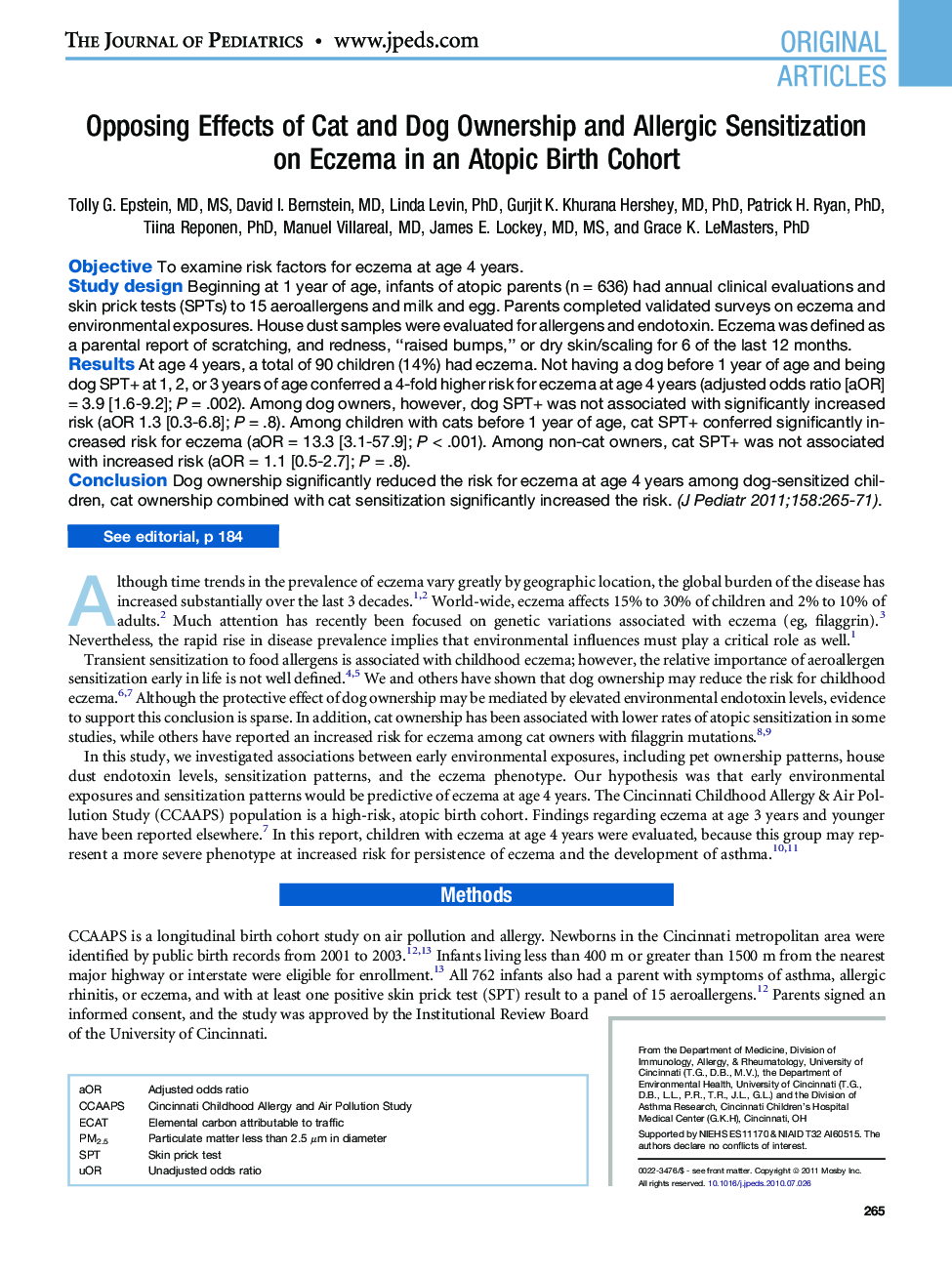| Article ID | Journal | Published Year | Pages | File Type |
|---|---|---|---|---|
| 6225590 | The Journal of Pediatrics | 2011 | 12 Pages |
ObjectiveTo examine risk factors for eczema at age 4 years.Study designBeginning at 1 year of age, infants of atopic parents (n = 636) had annual clinical evaluations and skin prick tests (SPTs) to 15 aeroallergens and milk and egg. Parents completed validated surveys on eczema and environmental exposures. House dust samples were evaluated for allergens and endotoxin. Eczema was defined as a parental report of scratching, and redness, “raised bumps,” or dry skin/scaling for 6 of the last 12 months.ResultsAt age 4 years, a total of 90 children (14%) had eczema. Not having a dog before 1 year of age and being dog SPT+ at 1, 2, or 3 years of age conferred a 4-fold higher risk for eczema at age 4 years (adjusted odds ratio [aOR] = 3.9 [1.6-9.2]; PÂ =Â .002). Among dog owners, however, dog SPT+ was not associated with significantly increased risk (aOR 1.3Â [0.3-6.8]; P = .8). Among children with cats before 1 year of age, cat SPT+ conferred significantly increased risk for eczema (aOR = 13.3 [3.1-57.9]; P < .001). Among non-cat owners, cat SPT+ was not associated with increased risk (aOR = 1.1 [0.5-2.7]; P = .8).ConclusionDog ownership significantly reduced the risk for eczema at age 4 years among dog-sensitized children, cat ownership combined with cat sensitization significantly increased the risk.
